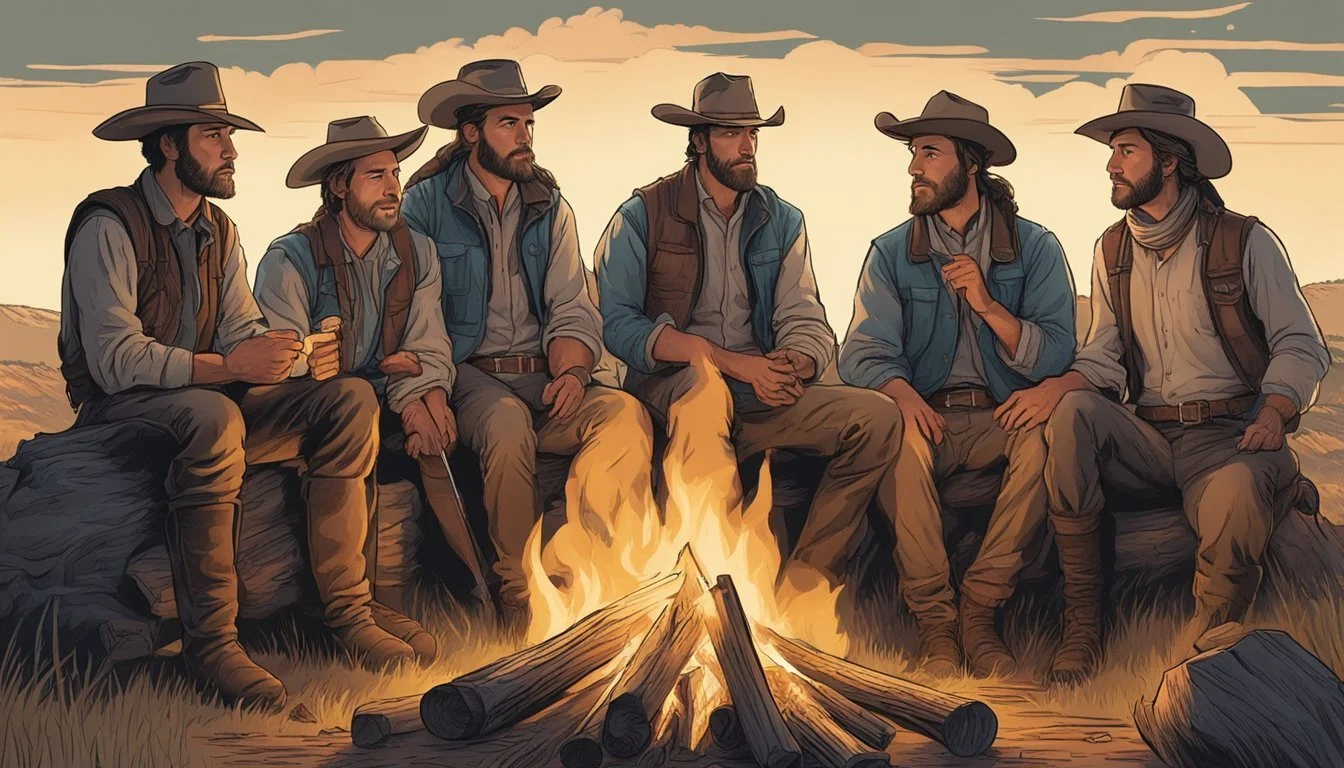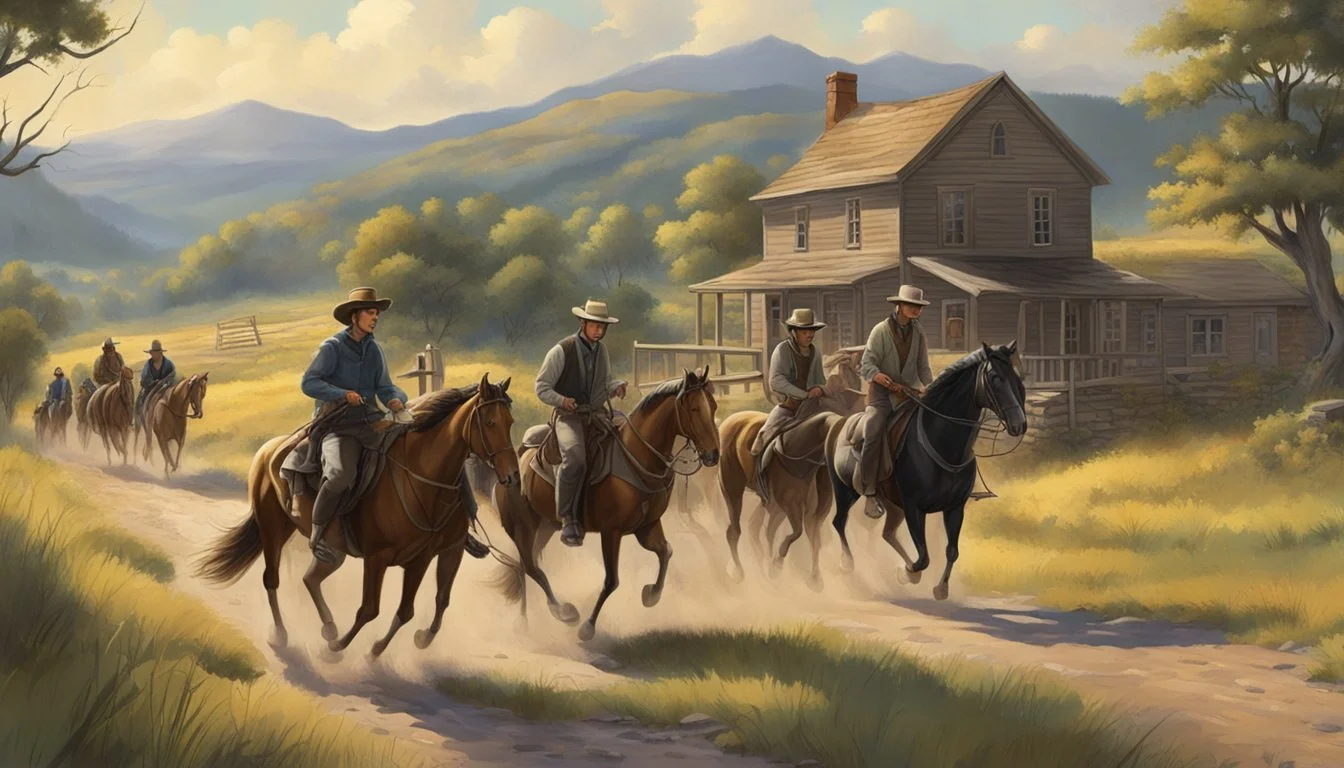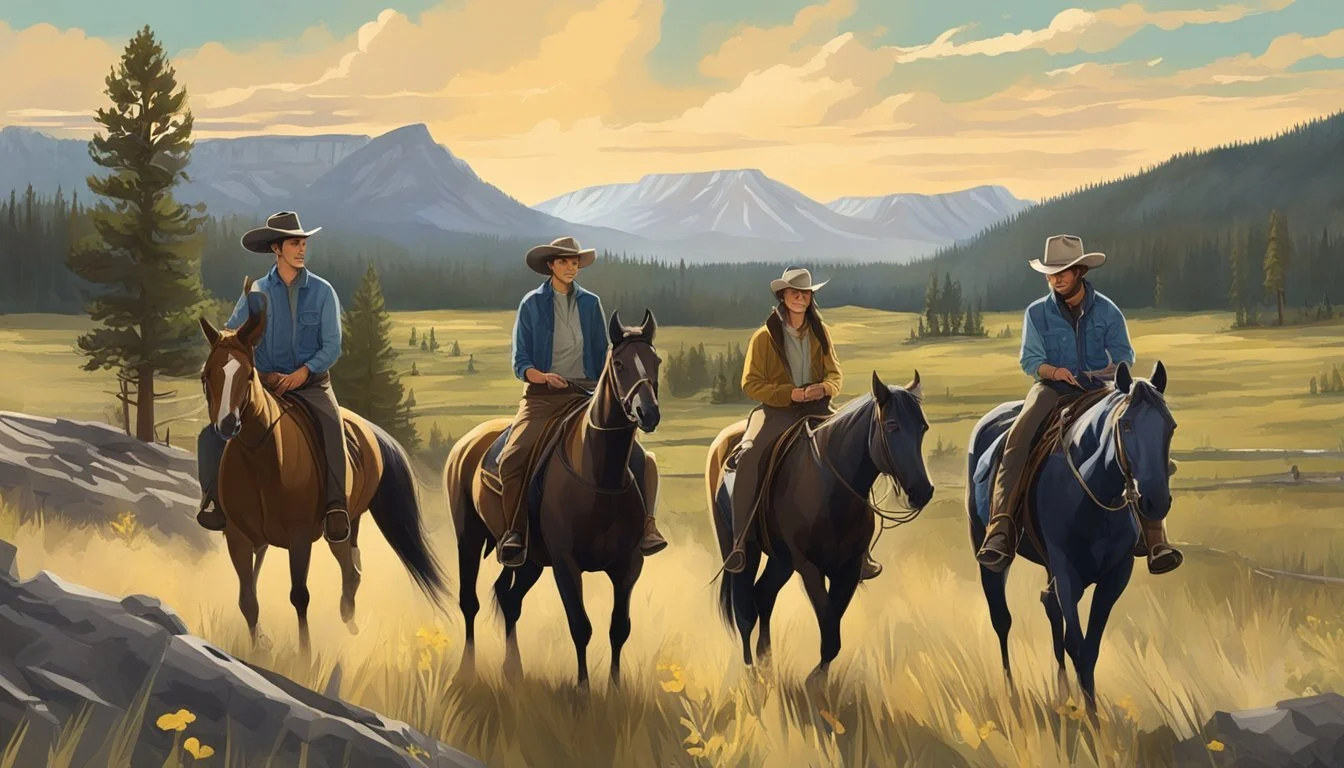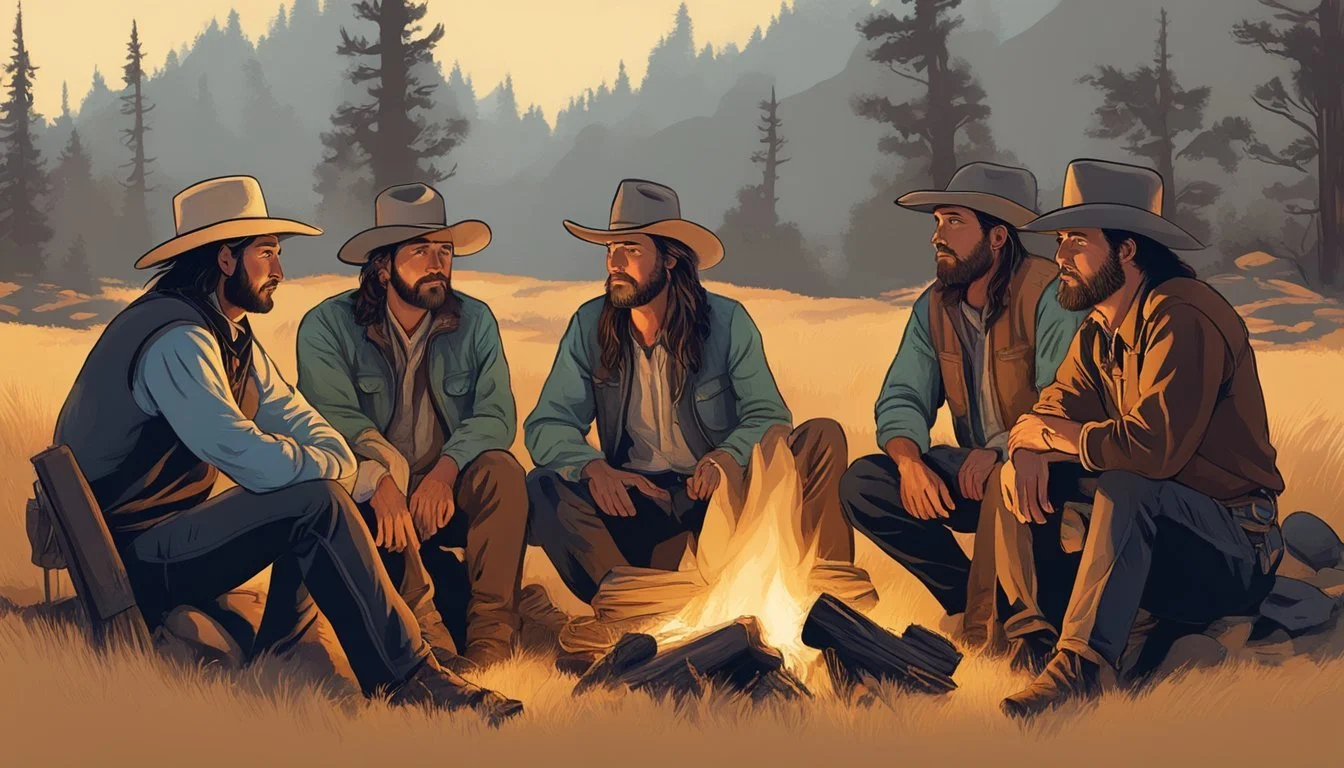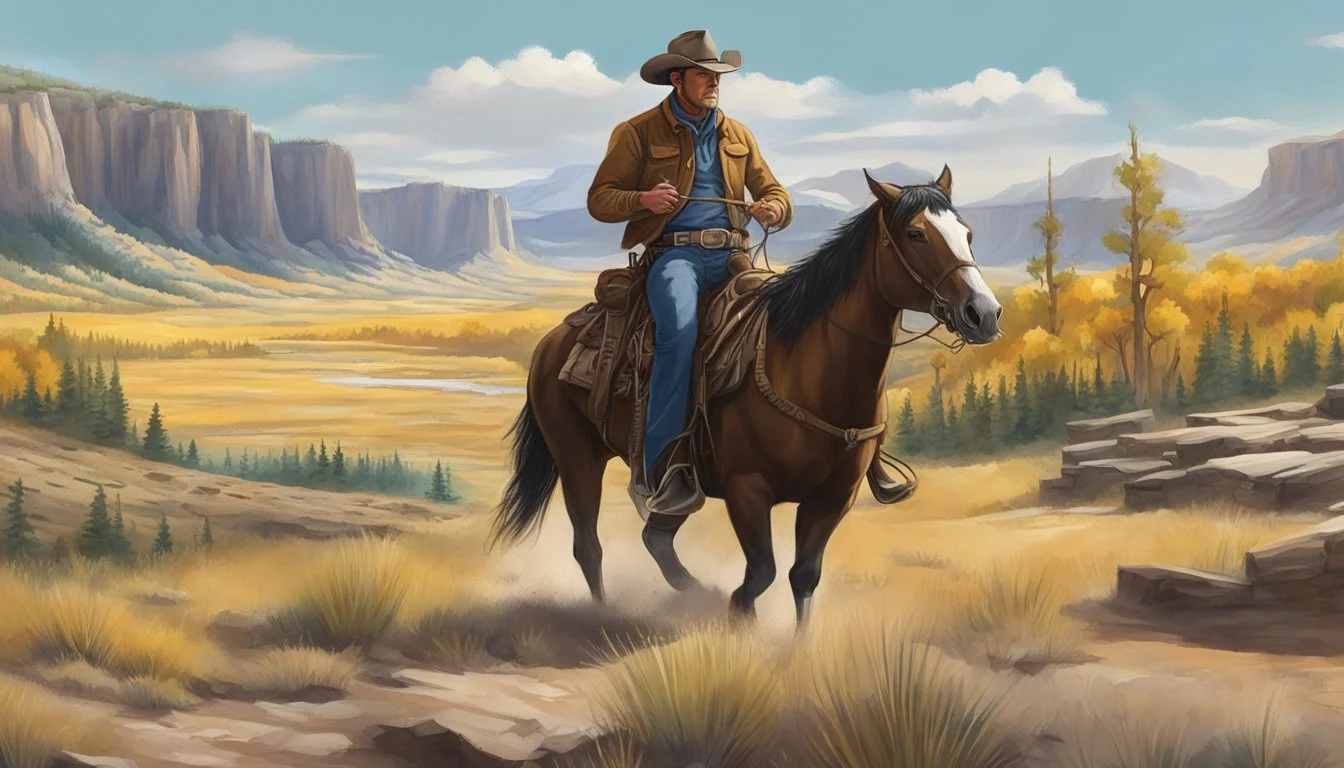Yellowstone Reveals Shocking Truth About Rural Education in America
Yellowstone, the hit television series, offers a unique perspective on rural education in America. The show portrays education as more than just formal schooling, encompassing practical skills and ancestral knowledge crucial for survival in the modern American West. Through its storytelling, Yellowstone highlights the importance of diverse learning experiences in shaping power dynamics and character development.
Rural education in America faces distinct challenges and opportunities, which Yellowstone subtly explores through its narrative. The series depicts a world where traditional academic knowledge intertwines with practical, hands-on learning. This blend reflects the reality of many rural communities, where education often extends beyond the classroom to include skills passed down through generations.
Yellowstone's approach to education serves as a lens through which viewers can examine the broader landscape of rural schooling in America. The show's portrayal of characters from various educational backgrounds illuminates the complex relationship between formal education, life experience, and success in rural settings. This nuanced depiction invites audiences to consider the value of different forms of knowledge and the role of education in shaping rural American culture.
Historical Background of Rural Education
Rural education in America has undergone significant changes since the country's early days. The development of schooling in rural areas was shaped by geographic, economic, and social factors unique to each region.
Early Settlement and Schooling
In the 1800s, rural education was often informal and sporadic. One-room schoolhouses served as community hubs, educating children of various ages together. Teachers, typically young women, lived with local families and taught basic reading, writing, and arithmetic.
Curriculum focused on practical skills needed for farm life. School terms were short, allowing children to help with planting and harvesting. Books were scarce, so students often shared texts or used hornbooks - wooden paddles with lessons written on parchment.
Community involvement was crucial. Parents contributed firewood, food, and boarding for teachers. Local school boards, elected by residents, made decisions about curriculum and hiring.
Impact of the Homestead Act and Westward Expansion
The Homestead Act of 1862 spurred westward migration, influencing rural education. New settlements established schools as a priority, seeing them as vital for community growth and stability.
As populations spread, states began mandating public education. This led to more structured school systems in rural areas. The challenge was providing consistent schooling across vast, sparsely populated regions.
Traveling teachers became common in some areas, moving between settlements to provide education. Some communities pooled resources to build centralized schools, though transportation remained a significant hurdle.
Yellowstone National Park Establishment
Yellowstone's establishment in 1872 indirectly impacted rural education in the American West. The park's creation highlighted the need for conservation education and sparked interest in natural sciences.
Schools near Yellowstone began incorporating lessons about local ecology and geology. This trend spread to other rural areas, enriching science curricula with regional environmental knowledge.
The park also created new economic opportunities, indirectly supporting local schools through increased tax revenue and population growth in surrounding communities.
Education in the Early 20th Century
By the early 1900s, rural education was evolving rapidly. The consolidation movement gained traction, merging small schools into larger, centralized institutions. This aimed to improve education quality and efficiency.
In 1923, the National Committee on Country Life Education was formed, focusing on rural school improvement. It advocated for better teacher training, expanded curricula, and improved facilities.
Rural electrification projects in the 1930s brought new technologies to schools. Radio programs supplemented lessons, exposing students to broader perspectives. Libraries expanded, often through bookmobile services.
Despite progress, rural schools faced ongoing challenges. Limited funding, teacher shortages, and geographic isolation continued to impact educational quality and access in many areas.
Current Educational Landscape in Rural Yellowstone Region
Rural schools near Yellowstone face unique challenges and opportunities. They balance traditional values with modern needs while leveraging the area's natural resources for education.
School Structures and Resources
Rural Yellowstone schools often have smaller class sizes and multi-grade classrooms. Many operate on tight budgets, impacting facility maintenance and resource availability. Some schools serve as community hubs, offering spaces for local events and adult education programs.
Funding disparities between urban and rural districts persist. This affects teacher recruitment and retention, especially for specialized subjects. Creative solutions like shared staff between districts help address shortages.
Curriculum Focus and Rural Relevance
Curricula in Yellowstone-area schools blend standard subjects with locally relevant content. Agriculture, environmental science, and wildlife management feature prominently. These topics connect students to their surroundings and potential future careers.
Schools emphasize practical skills alongside academic knowledge. Many offer vocational programs in ranching, tourism, and conservation. This approach prepares students for local job markets while preserving rural traditions.
Technology Integration and Distance Learning
Rural Yellowstone schools increasingly rely on technology to expand educational opportunities. High-speed internet access remains a challenge in some areas, limiting online resources.
Distance learning programs connect students with specialized courses not available locally. Virtual field trips to Yellowstone National Park enhance science education. Some schools use video conferencing for language classes or cultural exchanges with urban partners.
Community Involvement and Outdoor Education
Community engagement is crucial in Yellowstone's rural schools. Local experts often guest lecture, sharing real-world knowledge. Parent-teacher associations play active roles in school decision-making and fundraising.
Outdoor education is a cornerstone of many programs. Students participate in hands-on projects within Yellowstone National Park. These experiences foster environmental stewardship and connect classroom learning to the local ecosystem.
Schools partner with park rangers and wildlife biologists for unique learning opportunities. Such collaborations enrich science curricula and inspire conservation-minded young people.
Cultural and Social Dynamics
Yellowstone's approach to rural education reflects the complex cultural and social dynamics of the American West. Local schools serve as focal points for preserving traditions while adapting to modern challenges.
Identity and Heritage in Curriculum
Rural schools near Yellowstone often incorporate regional history and cultural heritage into their curriculum. Students learn about ranching traditions, land stewardship, and the area's rich past. Local storytelling and oral histories play a key role in passing down knowledge.
Courses may include:
Western literature and folklore
Agricultural science and animal husbandry
Environmental studies focused on Yellowstone's ecosystem
These educational elements help foster a strong sense of place and identity among students.
Influence of Tourism on Education
The tourism industry surrounding Yellowstone National Park significantly impacts local education systems. Schools often develop programs that prepare students for careers in hospitality, wildlife management, and outdoor recreation.
Tourism-related educational initiatives include:
Field trips to park facilities and visitor centers
Guest lectures by park rangers and tourism professionals
Internship opportunities with local businesses
This integration helps students understand the economic importance of tourism while gaining practical skills.
Integration of Native American Perspectives
Schools near Yellowstone increasingly incorporate Native American history, culture, and perspectives into their curricula. This approach aims to provide a more comprehensive understanding of the region's past and present.
Educational efforts include:
Collaboration with local tribes on cultural exchange programs
Teaching of Native languages and traditional practices
Exploring indigenous land management techniques
These initiatives promote cultural awareness and respect for Native American heritage among students.
Family and Community Values in Schools
Rural schools in the Yellowstone area often reflect strong family and community values. Parent involvement is typically high, with families playing active roles in school activities and decision-making processes.
Community engagement is evident through:
Regular town hall meetings on educational issues
Volunteer programs supporting school activities
Intergenerational mentorship initiatives
This close-knit atmosphere fosters a supportive learning environment and reinforces local cultural norms.
Economic Factors and Rurality
Rural communities face unique economic challenges that significantly impact education. Ranching culture, property values, and corporate interests all play crucial roles in shaping the educational landscape of these areas.
Property Values and School Funding
Rural school districts often struggle with limited funding due to lower property values. In many areas, ranches and agricultural land are taxed at lower rates than residential or commercial properties. This can result in a smaller tax base for schools. Some districts have explored alternative funding methods, such as:
Bond measures
Partnerships with local businesses
Grant applications
Despite these efforts, many rural schools still face budget shortfalls. This impacts their ability to attract and retain qualified teachers, maintain facilities, and provide up-to-date resources for students.
Ranching Culture and Agricultural Education
Ranching culture heavily influences rural education in many areas. Schools often incorporate agricultural education programs to prepare students for careers in farming and ranching. These programs typically include:
Hands-on livestock management
Crop science courses
Agricultural business classes
These programs help preserve local traditions and provide practical skills for students. However, they can also limit exposure to other career paths and educational opportunities.
Impacts of Corporate Interests on Education
Corporate interests, particularly in the energy and natural resource sectors, can significantly affect rural education. Some companies offer scholarships or fund specialized programs to train future employees. This can lead to:
Increased funding for specific subjects
New technology in classrooms
Improved job prospects for graduates
However, corporate influence may also narrow the focus of education to serve industry needs. This can potentially limit students' broader educational experiences and career options.
Educational Response to Gentrification
Gentrification in rural areas near natural attractions or urban centers can dramatically impact local schools. As wealthy outsiders move in, property values and tax revenues often increase. This can lead to:
Better-funded schools
Improved facilities
More diverse course offerings
However, gentrification also presents challenges. Long-time residents may struggle with rising costs of living, potentially forcing them to move. This can disrupt the social fabric of communities and change the demographic makeup of schools.
Environmental and Conservation Education
Yellowstone National Park serves as a living laboratory for environmental and conservation education. Its diverse ecosystems and unique geological features provide rich learning opportunities for students and visitors alike.
Wildlife Management and Stewardship
Yellowstone's wildlife education programs focus on the park's iconic species and their ecological roles. Students learn about predator-prey relationships, habitat conservation, and human-wildlife coexistence. The park's bison and wolf populations are often used as case studies.
Park rangers lead field trips to observe animals in their natural habitats. These experiences help students understand the complexities of wildlife management and the importance of maintaining biodiversity.
Educators also address issues like wildlife corridors and migration patterns. They emphasize how human activities impact animal populations and discuss strategies for mitigating these effects.
Land Use Policies in Curricula
Yellowstone's educational programs explore the park's land use policies and their implications for conservation. Students examine the balance between preserving natural areas and providing public access.
Curricula cover topics such as:
Zoning regulations within the park
Visitor impact management
Trail maintenance and design
Sustainable tourism practices
These lessons often include hands-on activities, such as trail mapping exercises or simulations of land use decision-making processes. Students gain insight into the challenges of managing public lands for multiple uses.
Geothermal Features and Education
Yellowstone's geothermal features play a central role in its environmental education programs. Students learn about the park's unique geology, including:
Hot springs and their microbial ecosystems
Geyser eruption cycles and underground plumbing systems
Volcanic activity and its influence on the landscape
Field trips to geothermal areas allow students to observe these phenomena firsthand. Safety protocols and conservation ethics are emphasized during these visits.
Educators also discuss the potential for geothermal energy and its environmental implications. This connects Yellowstone's natural wonders to broader discussions about renewable energy resources.
Water Rights and Environmental Regulations
Yellowstone's education programs address the complex issue of water rights and environmental regulations. Students explore the park's watersheds and learn about:
The Clean Water Act and its application in national parks
Water quality monitoring techniques
Aquatic ecosystem conservation
Lessons often include water sampling activities and analysis of local stream health. Students gain practical skills while understanding the importance of protecting water resources.
The curriculum also covers the legal aspects of water rights, including:
Historical water use agreements
Current disputes over water allocation
The impact of climate change on water availability
These topics help students grasp the interconnectedness of environmental policy, resource management, and conservation efforts in Yellowstone and beyond.
Legal Aspects and Land Rights
Education in rural America intersects with complex legal issues surrounding land rights and historical injustices. Schools play a crucial role in shaping understanding of these topics and preparing students to navigate related challenges.
Historical Injustices in Education Materials
Textbooks and curricula in rural schools often glossed over historical land seizures from Native American tribes. This omission perpetuated misconceptions about property rights and land ownership.
Recent efforts aim to incorporate more accurate accounts of these injustices. Some districts now include lessons on broken treaties and forced relocations.
Educators face challenges in presenting this sensitive history objectively. Balancing multiple perspectives while acknowledging past wrongs requires careful consideration.
Native American Rights and Education Systems
Tribal sovereignty impacts education on reservations. Many Native American communities operate their own school systems under federal laws.
These schools often integrate traditional knowledge and language instruction. This helps preserve cultural heritage while meeting state academic standards.
Funding disparities between tribal and public schools remain a concern. Legal battles have sought to address resource inequalities and improve educational outcomes.
Some rural districts near reservations have formed partnerships with tribal education departments. These collaborations aim to better serve Native students and promote cultural understanding.
Educating on Land Disputes and Continuity
Rural schools increasingly address ongoing land disputes in their communities. This includes conflicts over water rights, mineral extraction, and development.
Students learn about legal concepts like easements, mineral rights, and eminent domain. Understanding these topics helps prepare them for future land-related decisions.
Case studies of local land disputes are often incorporated into social studies curricula. This connects abstract legal concepts to tangible community issues.
Some schools bring in guest speakers from various sides of land disputes. This exposes students to different perspectives and encourages critical thinking.
Teaching about Public Lands and Resources
Education on public lands management is crucial in many rural areas. Schools near national parks, forests, or BLM lands often focus on these topics.
Students learn about the legal framework governing public lands use. This includes concepts like multiple-use mandates and conservation laws.
Field trips to public lands help reinforce classroom learning. Students may participate in citizen science projects or meet with land managers.
Debates on resource extraction versus preservation are common in these lessons. This prepares students to engage in ongoing policy discussions affecting their communities.

